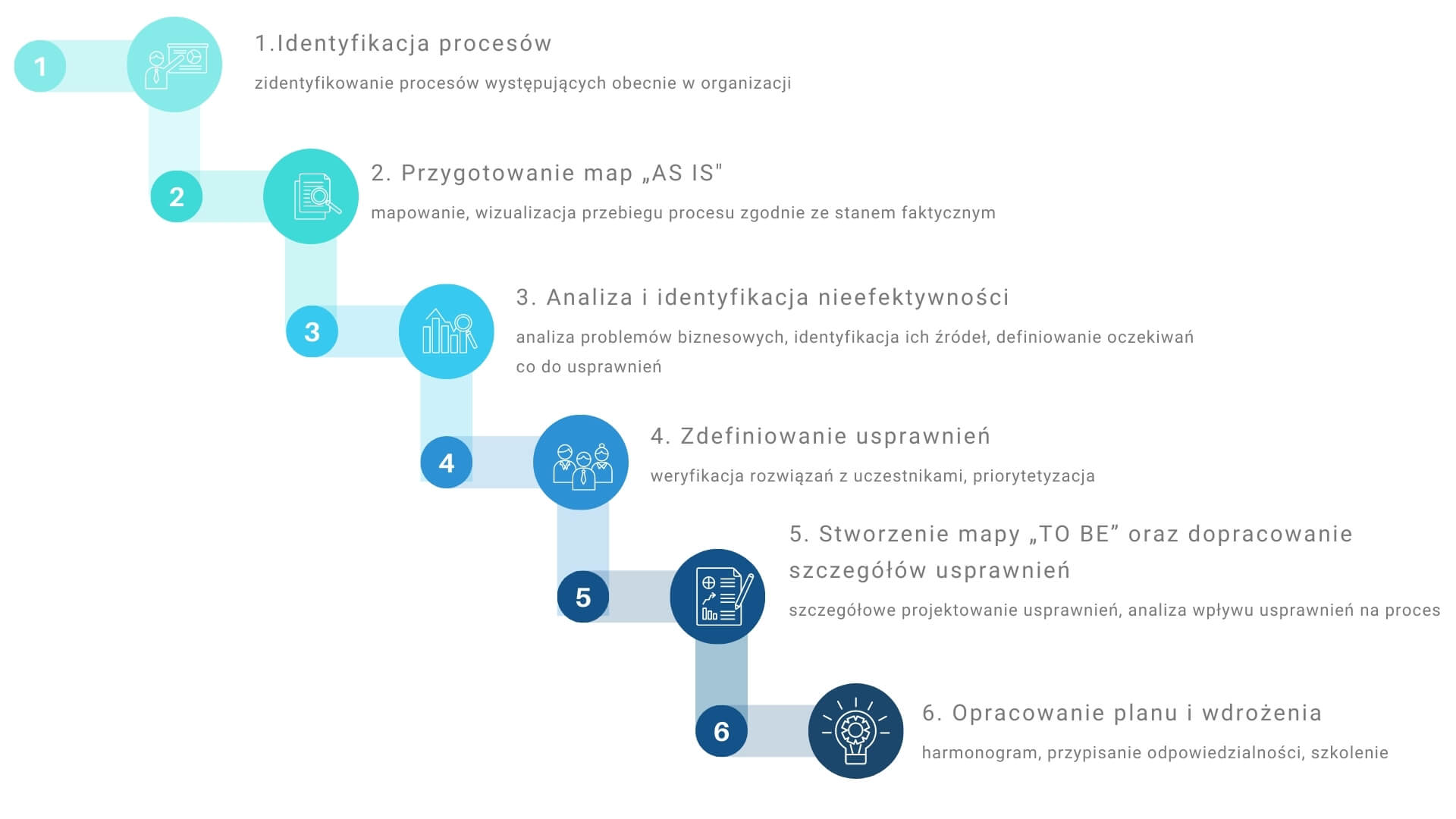The topic of business process optimization is currently gaining importance. Due to the current situation and continuing uncertainty on global markets, maximizing the efficiency of their business is becoming a priority for many entrepreneurs.
An enterprise is a set of interrelated processes. Each area of a company’s operations is characterized by different processes, but what they have in common is the provision of products and services to customers, both inside and outside the organization. The final result generated by the company depends on the effectiveness of individual processes.
Navigator Business Consulting will optimize business processes, analyzing problems and opportunities, proposing improvements individually tailored to the specificity of the company, which will fit into the company’s strategy and long-term plans, and will also meet the expectations of the owners.

Precisely defined goals of individual processes along with a description of the current state allow for the necessary understanding of the characteristics of the company’s operations. Understanding the state of the current process involves recognizing its individual elements. In the context of their further optimization, it is extremely important to identify processes that may potentially cause business problems. For each process, the following should be distinguished:
The purpose of mapping is to clearly and completely present the process. It is important that the process is presented as it actually is, avoiding any kind of colorization of reality.
The basis for undertaking optimization activities is a business problem, the nature of which may vary, but most often the problem comes down to ineffectiveness – not bringing the expected results and costliness – bringing the expected results, but at too high a cost. In our opinion, a comprehensive approach is recommended in process optimization projects – searching for the causes of inefficiency in the entire organization, because our experience shows that, after analysis, seemingly efficient processes often turn out to be the cause of a business problem in the organization.
Analysis of the current state is usually done by:
Each business process optimization project should have a defined business goal that the company wants to achieve after the project is completed. Our experience shows that in large companies the number of processes may exceed even 500, so in practice it is not possible to optimize all of them at the same time, which makes prioritization necessary. The proposed improvements should always be subject to evaluation of their individual variants, as well as verification of the proposed solutions with the process participants.
Process optimization should not be considered an „off-the-shelf product” that can be used in every company. There is no one-size-fits-all approach that will provide the best results, so depending on the identified inefficiencies and their causes, various improvements should be applied. It should also be borne in mind that starting process optimization usually requires investment in time, funds for new tools and training. At this stage, it is important to analyze the impact of the proposed improvement on the course of individual processes.
Without a doubt, the most difficult stage of optimization is the stage of implementing the developed changes. It is at this stage that most mistakes are usually made. The selection of appropriate tools at the implementation stage is a function of the goal of the entire optimization process. The activities carried out when developing an implementation plan vary depending on the specificity of the project, but can usually be distinguished:
Process optimization projects often significantly change the current way an enterprise operates, so it should be borne in mind that this is not a task that can be performed easily and quickly. You should not expect immediate effects, because change always takes time, and the foundation of any change is a proper understanding of the current state and actual course of processes in the organization. It is worth remembering that every change in the organization should be supported by business reasons and should have a precisely defined goal – change for the sake of the idea itself is pointless. At each stage of project implementation, it is also important to listen to employees’ suggestions and observations. Communication and convincing the environment to change is extremely important to maintain the appropriate level of motivation in striving to achieve the expected effects of process optimization.
Thanks to the multi-area support of professionals, you will be able to effectively optimize business processes in line with your expectations and the strategy of the company you manage. We are characterized by flexibility and, at the same time, knowledge of the highest standards for improving the functioning of companies.